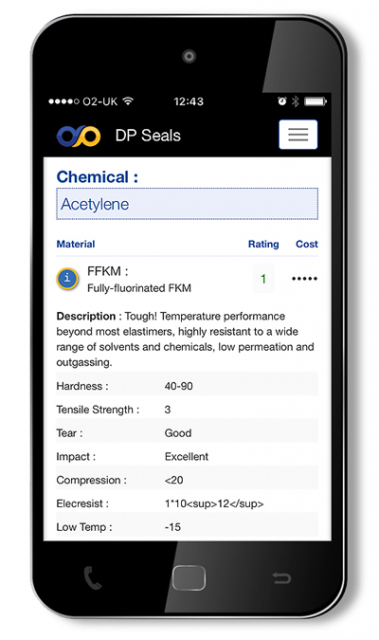Rubber Chemical Compatibility

These top tips are based on speaking with design engineer customers and our experience and expertise of custom rubber seals, gaskets and mouldings chemical compatibility gained in over 40 years.
Tip1: Use look up tables.
This can really help design engineers with initial investigations. DP Seals have had a Chemical Compatibility Database on our website for some time!
Tip 2: Get in touch with your manufacturer as early as possible.
Once you’ve done your initial investigations we’d suggest getting straight in touch with the manufacturer. They’ll be able to provide further advice about chemical compatibility at different temperature ranges and under different conditions such as vapour, gas, flowing or static liquid. They’ll also be able to outline any negative consequences of material selection.
Tip 3: Don’t discount materials just because of cost until you’ve spoken with your manufacturer
Cost is obviously a key consideration. FFKM or Perfluoroelastomers are some of the most incredible rubber materials but they do come at a very high cost. However at DP Seals, due to our expertise and experience, we can often utilise these materials to create a much more effective solution that offers significant savings. Ultimately good advice can sometimes mean we pick alternative lower cost materials as well.
Tip 4: Ensure the manufacturer can ensure consistency batch to batch for your current project and years into the future
This is, of course, critical to maintain performance. At DP Seals we achieve this through having a recorded preparation compound reference number that is tied in against the customer’s part. Once the part is approved for production, that reference number is locked down and used every time for all future production. This ensures stable and repeatable performance for every component.
Tip 5: Think about all the environments the rubber moulding will be in, not just when it is performing.
It is not only important that the moulding remains chemically inert within its typical product environment, but also to think of all the environments the rubber moulding will be in. For example, any detergents or chemicals used for cleaning. Overlooking this could result in contaminated wash systems and product de-gradation.
Summary
In this article we’ve touched on some of the key things engineers should consider in respect to chemical compatibility when designing custom rubber, seals, gaskets or mouldings.
- Using look up Chemical Compatibility Tables to save time
- Getting in touch early with the manufacturer to consider issues, operating conditions, negative consequences and product lifespan
- Not discounting materials too early, because of cost, without speaking to the manufacturer
- Ensuring batch consistency and
- Considering all environments the rubber part will be in. Not just when it’s performing
If you have any questions about this post or would like to discuss your own rubber chemical compatibility application please get in touch.